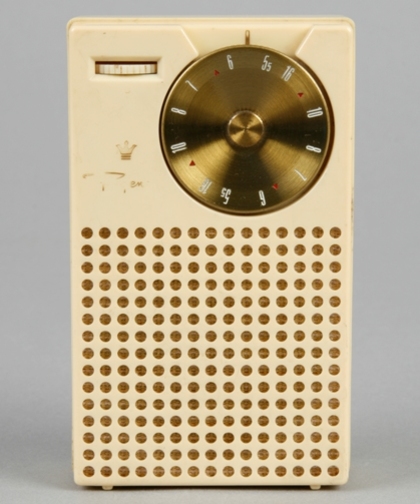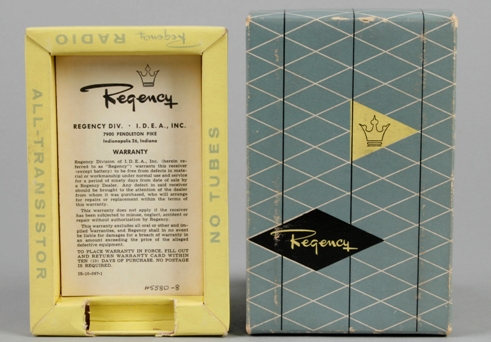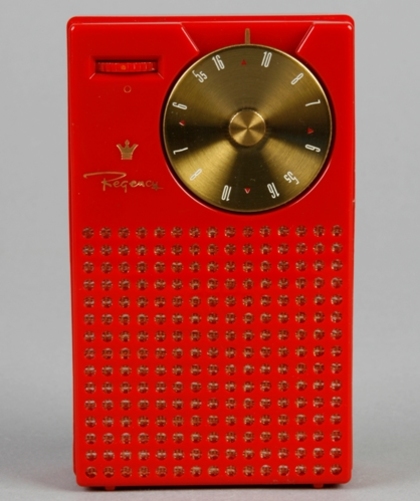
This Regency TR-1 transistor radio was one of the earliest portable radios imported into Australia. It is significant for the way it combines science, design, and culture: the solid state physics that led to the development of the transistor; the aesthetics and functionality of the plastic radio body; and the portability that took radio out of the home and made listening to it more often an individual experience rather than a group activity.
Until the 1920s most radios sold in Australia were imported, but after that date increasing numbers were manufactured locally. All were battery-operated until the introduction of mains operation in1928, but the early batteries were large, as were the radios. The number of broadcast transmitters in Australia increased from eight in 1924 to 31 by 1930.
Some of the first compact radios were produced in Australia at this time. They were made to be installed in cars, but were virtually unusable while moving due to interference from the engine and electrical system. Other problems included bulky valves, overheating and high power demand, which could drain a car’s battery. In the 1930s and 1940s the size and power consumption of car radios decreased, while the introduction of the ferrite rod aerial improved reception.

A major development came in 1948 when US scientists William Shockley, Walter Brattain and John Bordeen invented the world’s first solid-state amplifier, which they named a ‘transistor’. Capable of carrying out the same function as a valve but much smaller and not prone to overheating, the transistor opened up new possibilities for smaller radios and new directions in radio design.
In July 1954 the Texas Instruments and Industrial Development Engineering Associates (I.D.E.A.) companies embarked on a six month project to produce a pocket-sized radio for the Christmas market. The result was the Regency TR-1, the world’s first pocket transistor radio. Over one hundred thousand, in a range of colours, were sold during its first year of manufacture.

The radio was designed by the firm of Painter, Teague and Petertil whose final design was an excellent reflection of modernity. Aside from the sleek simplicity of its lines, the other standout feature was its distinctive grille, which was copied by almost all pocket radios that followed the TR-1. The design was recognised by the Industrial Design Society of New York, and in 1955 the radio was included in the American Art and Design Exhibition in Paris.
Geoff Barker, Curatorial, 2013
References
Handy, R., Erbe, M., Antonier, A., ‘Made in Japan, Transistor Radios of the 1950s and 1960s”,
Chronicle Books, San Francisco, 1993
Musico,W., T., ‘Australian radio; the Technical Story, 1923-1983’, Kangaroo Press, 1984